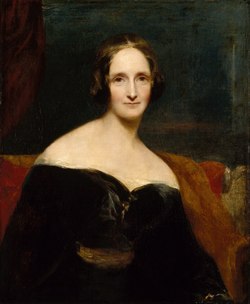
Mary Shelley Page 11
We found 21 free papers on Mary Shelley
Essay Examples
Overview
Romanticism in Frankenstein
Frankenstein
Romanticism
The extraordinary scientist Frankenstein alongside his creative writing incited readers with the threat of the unknown and the supernatural power of the forces of nature (Babers, 2008). An in-depth examination of the traits of Victor Frankenstein, the role played by scientific tests and the complex setting around which this novel evolves, indeed qualifies Mary Shelley’s,…
Frankenstein- Acquirement of Knowledge
Age of Enlightenment
Frankenstein
In Mary Shelley’s Frankenstein, the acquisition of knowledge is depicted as dangerous, and the novel supports Victor Frankenstein’s belief that a man is happier if he remains ignorant of the world beyond his native town. Shelley’s work examines the consequences of pursuing knowledge and science, emphasizing the risks involved in delving into these areas. The…
Nature as Monster By Margret Atwood
Immortality
Monster
Explain the David Goliath in Canadian literature? David – Goliath imagery is taken from the Holy Bible. In the story the little David kills the giant Goliath but in the poem David by” Earl Barney Davit’s name is suggested. On the surface the poem is wrote two young man who go mountain climbing, but it…
Creator and Creation
Creation
Victor Frankenstein
For many years, philosophers and mystics have been questioning creators and their creations. All sorts of different cultures have myths, images, stories, and metaphors. In modern time, we look for scientists to answer our questions that we have. Science claims to know the story about the ultimate nature of matter, the origin of life, and…
| born | August 30, 1797, Somers Town, London, United Kingdom |
|---|---|
| died | February 1, 1851, Chester Square, London, United Kingdom |
| description | Mary Wollstonecraft Shelley was an English novelist who wrote the Gothic novel Frankenstein; or, The Modern Prometheus, which is considered an early example of science fiction. She also edited and promoted the works of her husband, the Romantic poet and philosopher Percy Bysshe Shelley. |
| children | Percy Florence Shelley, Clara Everina Shelley, William Shelley |
| information | Short biography of Mary ShelleyMary Shelley (1797-1851) is best known for writing Frankenstein, or The Modern Prometheus (1818), which has become one of the world’s most famous horror stories. She was born in London on 30 August 1797. Her mother, Mary Wollstonecraft, was the author of A Vindication of the Rights of Woman and a radical feminist, and she died just 10 days after Mary was born.Mary was brought up by her father, William Godwin, and her half-sister, Fanny Imlay. After attending a number of schools, she ran away to France with a married man, Percy Bysshe Shelley, in 1814 and married him the following year.They had four children, but only one survived to adulthood. The couple settled near Geneva, Switzerland, and in 1816 visited Lord Byron at the Villa Diodati at Lake Geneva, where they read ghost stories and talked about the idea of creating a ‘ghost story’. Mary began writing Frankenstein the following year. The couple left for England in 1818 and Mary completed the novel there. It was published anonymously in 1818, but Mary’s name was soon attached to it, and it was an instant success. The couple were now famous, and they continued to travel and write. Percy Bysshe Shelley died in 1822, aged just 29, and Mary returned to England with her son. She continued to write and publish, and in 1826 she married a widower, Sir Percy Florence Shelley, who was the son of her late husband’s friend, Sir Timothy Shelley.Mary died in 1851, aged 53.FrankensteinFrankenstein, or The Modern Prometheus, is a novel about a scientist, Victor Frankenstein, who creates a monster from dead body parts. The monster is intelligent and can speak, but he is ugly and feared by everyone who sees him.He turns on his creator and, after killing Frankenstein’s brother, his best friend and his wife, he pursues Frankenstein across the Arctic wastes, finally catching up with him and killing him.The novel was first published in 1818, but it has been reprinted many times and has been made into films, stage plays and television programmes. It is still one of the most famous horror stories ever written. General Essay Structure for this Topic
Important informationSpouse: Percy Bysshe Shelley (m. 1816–1822) Place of burial: St Peter’s Church, Bournemouth, United Kingdom Parents: Mary Wollstonecraft, William Godwin Top stories: Mary Wollstonecraft Shelley’s best-known book is Frankenstein; or, The Modern Prometheus ( 18 18, revised 183 1). She wrote several other novels, including Valperga ( 1823), The Last Man ( 1826), The Fortunes of Perkin Warbeck ( 1830), Lodore ( 1835), and Falkner ( 1837), and a travel book, History of a Six Weeks’ Tour ( 1817)., Books and plays: The Last Man 1826, The Original Frankenstein 1823, Mathilda 1959 |

